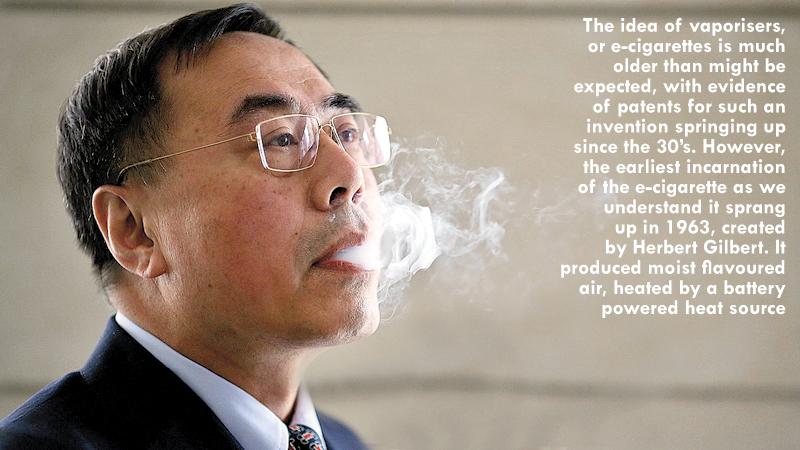
E-cigarettes and vapes are devices that vaporise substances for inhalation and are meant to diminish the harmful effects of standard smoking by creating the vapor without combustion. Vaping can use smoking substances like tobacco, cannabis, as well as other drugs, in a healthier way compared to traditional smoking. In addition to being healthier for the user, it also prevents second hand smoke. However, with vaping becoming more and more mainstream, quickly replacing standard smoking, its purported health benefits have since been called into question.
Idea
The idea of vaporisers, or e-cigarettes is much older than might be expected, with evidence of patents for such an invention springing up since the 30’s. However, the earliest incarnation of the e-cigarette as we understand it sprang up in 1963, created by Herbert Gilbert. It produced moist flavoured air, heated by a battery powered heat source. Despite the creation of such an alternative, Gilbert’s invention never took off as the smoking industry was still going strong back then. The modern design of the e-cigarette is very similar to Gilbert’s though his version was an even healthier option as it didn’t use any addictive substances.
The first modern, commercially available incarnation of the e-cigarette was invented by Chinese pharmacist and medical researcher, Hon Lik. As a heavy smoker himself, he created it in response to his father’s passing from lung cancer. His design consisted of a plastic cartridge that contained a battery, atomiser and nicotine cartridge. Though it underperformed, with his designs being stolen and copied by other manufacturers, Hon Lik’s invention served as the basis for the modern movement of vaping.
Popularity
The popularity of vaping stemmed from the growing awareness of the harmful effects of smoking. Compared to Gilbert’s time, people in the 21st century were far more educated on the subject and many countries banned outright public smoking altogether. Due to the gas produced by e-cigarettes being more of an aerosol than smoke, e-cigarettes became an instant hit with smokers seeking an alternative. With this success, e-cigarettes also became a popular tool to help smoking addiction, as they simulated the feel of smoking while being healthier, as opposed to nicotine patches or gum.
However, vaping did not become viral until new designs were made to look less like cigarettes and became more customisable, allowing Vapers to enjoy multiple flavours, colours and stick designs. A culture sprang up around it, with vape conventions and communities spreading like wildfire globally. The attractive designs and marketing that followed led to vape use becoming popular with teenagers as well and though Vapes are technically healthier than smoking, it still had nicotine which led to younger cases of nicotine addiction.
Criticisms
Despite the mainstream virality of vaping, there have been multiple criticisms that have popped up around the product. The most prominent being the lack of regulation for it. As vapes are separate from cigarettes, vapes are yet to be properly regulated, which has led to certain issues like teenage vaping, as well as vape designs and modifications that have led to injuries, hospitalisation and even deaths. People have also pointed out the ineffectiveness of vapes to help smoking addiction, with even the inventor of it, Hon Lik vaping in addition to smoking rather than instead of it. However, studies have since proven that with the proper help, like actual therapy, vaping can be an invaluable tool that can support the curing of addiction.

